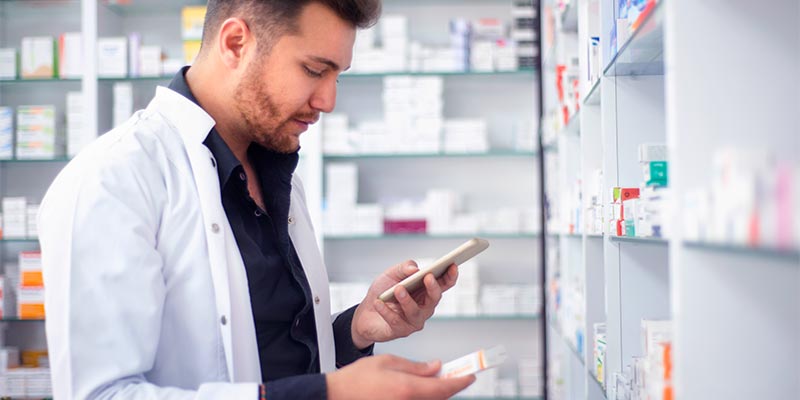How to combat counterfeiting in the health industry
The COVID-19 crisis has put unprecedented stress on healthcare product manufacturers for personal protective equipment (PPE), ventilators, vaccines, and targeted treatments. Regrettably, this has also created the perfect opportunity for criminals looking to profit from the pandemic. The frontline of defence in this battle is adding a digital layer of product protection.
Packaging: the first line of protection against product piracy
A crisis for some is an opportunity for others. As soon as the outbreak of SARS-CoV-2 began to spread around the world, counterfeiting of COVID-19-related products escalated into a pandemic of its own. An online search for “counterfeit COVID-19” reveals a bevy of articles on fake PPE, tests, vaccines, and other items. This goes beyond a problem of brand protection for companies—purchasing a counterfeit healthcare product is potentially lethal.

Regardless of the channel a healthcare product is procured from, the first line of protection is its packaging. Manufacturers in the industry deploy layers of overt and covert mechanisms on packages to thwart counterfeiters—often above and beyond those mandated by regulatory bodies. Unfortunately, counterfeiters also have access to these same technologies, which can make fake products look just like real products.
When something is brand new—like COVID-19 tests or vaccines—there is no history, no former experience with the product and its packaging. This gives counterfeiters an even greater advantage in introducing fakes into the supply chain.
Illicit distribution channels
To make matters worse, the internet allows easy distribution of counterfeits. E-commerce has exacerbated the distribution of fake healthcare products and medicines with genuine-looking e-pharmacy imposters and storefronts on digital platforms. Given lockdowns, and greatly modified in-person retail experiences, online commerce exploded to even greater heights.
These sites can also be used to distribute diverted items—that is, legitimate products that are swiped before reaching their intended destination and then sold at inflated prices. Given the high demand for certain healthcare products, diversion is another major issue to tackle. Diverted products may be legitimate, but they may not have been handled with the same care as products moving through the trusted supply chain.
Protecting the product is protecting the user
What if there was a way for manufacturers to add a digital layer of protection to their products that’s impossible to counterfeit? A way to track individual items as they move across the supply chain? And most importantly, that allowed anyone receiving the product to verify its authenticity before using it?
There is a way—and it begins with a simple barcode. Every package has some type of code: a serialized 2D barcode used for regulatory compliance, or perhaps a Universal Product Code (UPC) used for point-of-purchase scanning, or maybe a QR code used for consumer engagement programs. These barcodes can be leveraged to combat supply chain threats.
A digital layer is needed for better anti-counterfeiting programs
It is possible to transform an existing package barcode into a unique digital identifier. This is possible because printing is a dynamic process. There are environmental factors such as line speed, humidity and substrate that create micro-variations in a printed mark. This unseen noise can be used to derive a distinctive digital identifier—an e-Fingerprint®—for each product that is impossible to duplicate.
While one million of the same UPC barcodes might be printed on as many products, e-fingerprinting allows each to be individually identified. Using a simple smartphone app, users can scan these barcodes anywhere in the supply chain and instantly authenticate a product. Being now uniquely identified, the solution can also deliver to the user any necessary information about that product, like its manufacturing date, or even if it has been recalled.
As it is based on an already existing mark, this technology is non-additive, representing substantial cost savings on capital purchase, artwork redesign and change management compared to additive digital solutions. Moreover, by using an element of the existing packaging, this anti-counterfeiting solution does not slow down product rollout.
Combat supply chain threats
Keeping ahead of counterfeiters is a constant race. But winning it is easier than you might think. You can use your existing codes to ensure that every product is authentic, safe, and digitally connected for real-time verification—protecting your products, your consumers, and your brand.

